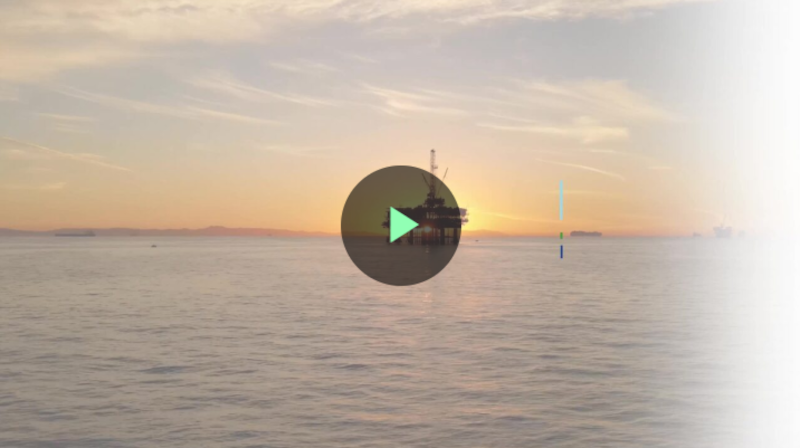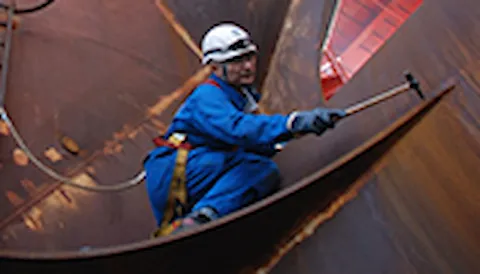MyBarrier Well
MyBarrier Well is a cutting-edge web-based system evaluating the risk of well blowouts during the well operational phase.
MyBarrier Well is a cutting-edge web-based system developed by DNV in collaboration with Petrobras well integrity engineers, aimed at quantitatively evaluating the risk of well blowouts during the well operational phase. This tool presents features for managers and engineers from energy operating companies responsible for well integrity management. Utilizing a cavity and barrier element model and a graph theoretic algorithm, MyBarrier Well identifies all potential leak paths from the well. Furthermore, it employs an advanced time-dependent reliability model to evaluate significant blowout risk indicators, including the instantaneous frequency of uncontrolled leaks, the cumulative probability of a blowout throughout the remaining life of the well, and the incremental cumulative risk (ICR) generated by a detected barrier element failure.
The risk of blowout is visually represented by a three-zone model: an acceptable zone (green), a tolerable zone (orange), and an unacceptable zone (red), separated by two control lines. These control lines—lower (orange) and upper (red)—delineate the boundaries between the zones, allowing operators to understand the current risk level effectively. Upon detecting a failure, MyBarrier Well calculates its impact on these risk indicators and the time required for the risk to reach the control lines, facilitating timely and informed decisions for well intervention and repair. This makes MyBarrier Well Integrity the most advanced failure management system for well integrity during the operational phase of a well, ensuring unparalleled safety and reliability.

Watch the MyBarrier Well introduction video.
Our service
For the past five years, DNV Risk Management South America has developed the web-based computational system MyBarrier Well. This system performs a detailed quantitative assessment of the risk of a well blowout during its operational phase, which includes production, well interventions and temporary abandonment. It has been specially designed to serve as a risk-informed failure management tool to help well integrity managers and engineers make decisions regarding detected barrier element failures during operation.
MyBarrier Well version 2.0 has just recently been completed and incorporates several new functionalities in addition to those of the previous version. With it, well integrity engineers and managers can perform the following analyses:
- What is the current (today) blowout risk of each well? What is the risk status of each well compared to the company risk management criteria – acceptable, tolerable, unacceptable?
- Which wells have their blowout risks approaching the Lower Control Line (between acceptable and tolerable risk zones) and which ones are approaching the Upper Control Line (between tolerable and unacceptable risk zones)? How much time they have from today until their blowout risk reach each of the two control lines?
- What is the impact of a detected failure (or failures) of any barrier element on the blowout risk indicators? In which risk zone is the well after the detected failures? Can we continue to operate the well with the detected failure or we have to immediately close the well for repair?
- How much time do we have until an intervention must be performed to avoid the risk of the well becoming unacceptable? What is the blowout risk of each type of intervention? In which cases can it outweigh the risks of not intervening?
- Which wells should we focus our integrity management attention (e.g., intervention resources) now or within the next couple of months?
- What are the impacts of different frequencies of test (function/pressure tests) for various groups of tested barrier elements?
- What failure correction strategy leads to the lower cumulative blowout risk over the remaining life of a well after detection of one or more barrier element failures? A comparative risk analysis of the various strategies can be performed in one run leading to clear results with respect to the preferred strategies.
Know more about MyBarrier Well 2.0
We are very happy to announce that this much-improved version 2.0 of the system is now completed and ready to be used - MyBarrier Well 2.0! A list of new functionalities and usability improvements implemented in version 2.0 are presented below together with some of the main functionalities of version 1.0.
Our expertise
In general, energy companies that own wells have a well integrity management system based on a qualitative well failure model, which may be sufficient for some objectives, however it is not specific enough when there is focus on analyzing specificities of a given well. During operation, the events (failures, interventions, repairs, tests) differ from well to well, and qualitative tools may not be robust and specific enough to support decision-making and prioritization. Based on that, DNV Risk Management South America has joined forces with Petrobras, putting together DNV deep knowledge in reliability engineering and risk analyses together with Petrobras’ well integrity expertise, one of the largest national energy companies in the world. With this, MyBarrier Well is the most robust tool for blowout risk evaluation in the market, providing tailor made quantitative risk results with strong technical basis and validation by operators, with standardized risk assessment for all wells, regardless of location and team involved in the risk assessment. The tool is currently implemented and in use in Petrobras and Enauta providing risk-informed support for operational decisions related to well integrity management. The tool has also been used to provide quantitative risk results for Total Energies and Trident Energies to support well integrity decision-making for specific wells in Brazil.
The application of MyBarrier Well supports operational decision-making with an advanced quantitative assessment of blowout frequencies and other key risk indicators, thus reducing subjectivity and enhancing traceability and consistency in processes across the company, ensuring the same analytical evaluation for all wells.





